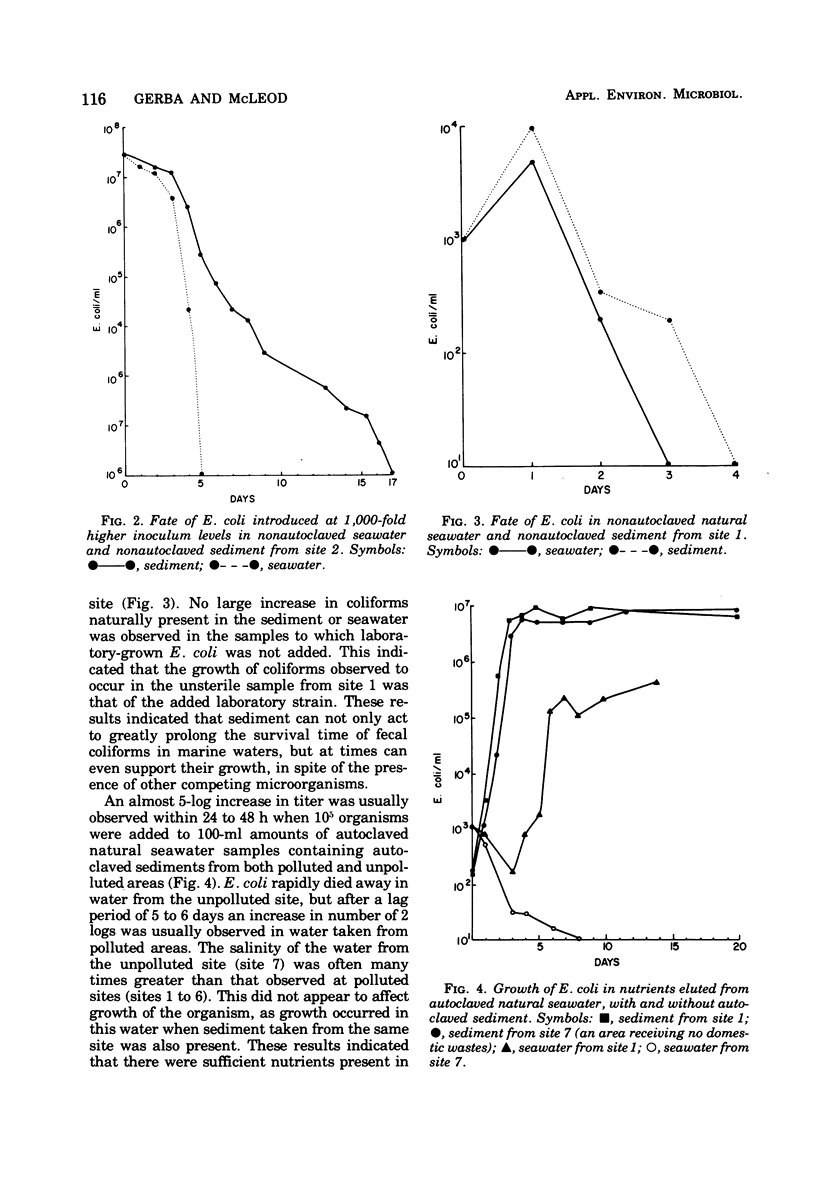Abstract
Escherichia coli, a fecal coliform, was found to survive for longer periods of time in unsterile natural seawater when sediment material was present than in seawater alone, and at least on one occasion growth was observed to occur. This enteric bacterium was found to increase rapidly in number in autoclaved natural seawater and autoclaved sediment taken from areas receiving domestic wastes, even when the seawater had salinities as high as 34 g/kg. However, in autoclaved seawater, growth was always more gradual and never reached numbers as high as those observed when sediment was present. It was found that nutrients were easily eluted from the sediment after autoclaving or upon addition to artificial seawater, but little elution occured during mixing of the sediments with unsterile natural seawater. The longer survival of E. coli in the sediment is attributed to the greater content of organic matter present in the sediment than the sweater. These laboratory results, in part, could explain why on a volume basis larger numbers of coliforms and fecal coliforms and fecal coliforms were found in estuarine sediments than the overlaying water at field sites.
Full text
PDF






Selected References
These references are in PubMed. This may not be the complete list of references from this article.
- CARLUCCI A. F., PRAMER D. Factors affecting the survival of bacteria in sea water. Appl Microbiol. 1959 Nov;7:388–392. doi: 10.1128/am.7.6.388-392.1959. [DOI] [PMC free article] [PubMed] [Google Scholar]
- GREENBERG A. E. Survival of enteric organisms in sea water. Public Health Rep. 1956 Jan;71(1):77–86. [PMC free article] [PubMed] [Google Scholar]
- Geldreich E. E., Best L. C., Kenner B. A., Van Donsel D. J. The bacteriological aspects of stormwater pollution. J Water Pollut Control Fed. 1968 Nov;40(11):1861–1872. [PubMed] [Google Scholar]
- Gerba C. P., Schaiberger G. E. Effect of particulates on virus survival in seawater. J Water Pollut Control Fed. 1975 Jan;47(1):93–103. [PubMed] [Google Scholar]
- Grimes D. J. Release of sediment-bound fecal coliforms by dredging. Appl Microbiol. 1975 Jan;29(1):109–111. doi: 10.1128/am.29.1.109-111.1975. [DOI] [PMC free article] [PubMed] [Google Scholar]
- Hendricks C. W. Enteric bacterial growth rates in river water. Appl Microbiol. 1972 Aug;24(2):168–174. doi: 10.1128/am.24.2.168-174.1972. [DOI] [PMC free article] [PubMed] [Google Scholar]
- Hendricks C. W. Enteric bacterial metabolism of stream sediment eluates. Can J Microbiol. 1971 Apr;17(4):551–556. doi: 10.1139/m71-090. [DOI] [PubMed] [Google Scholar]
- Hendricks C. W. Increased recovery rate of salmonellae from stream bottom sediments versus surface waters. Appl Microbiol. 1971 Feb;21(2):379–380. doi: 10.1128/am.21.2.379-380.1971. [DOI] [PMC free article] [PubMed] [Google Scholar]
- Matossian A. M., Garabedian G. A. Virucidal action of sea water. Am J Epidemiol. 1967 Jan;85(1):1–8. doi: 10.1093/oxfordjournals.aje.a120666. [DOI] [PubMed] [Google Scholar]


